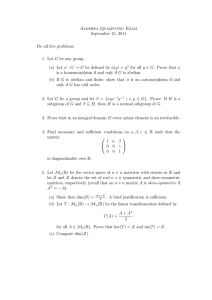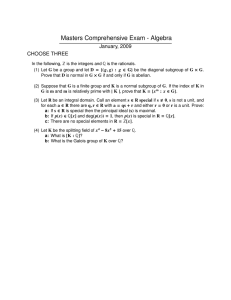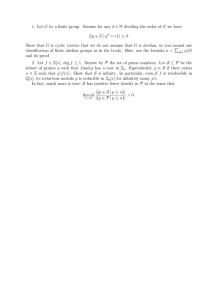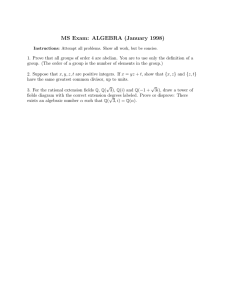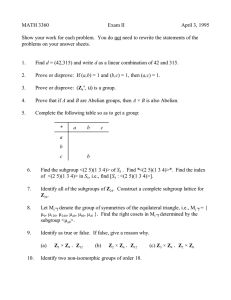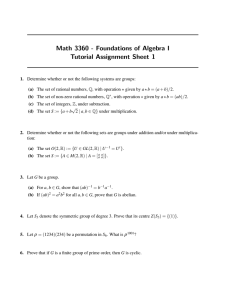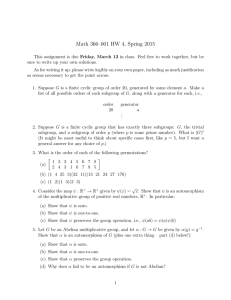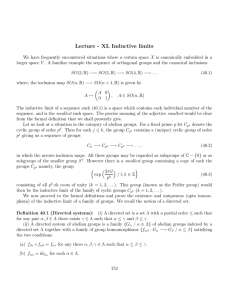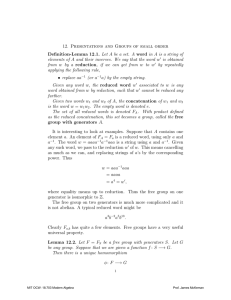Math 366–002 HW 5, Spring 2014
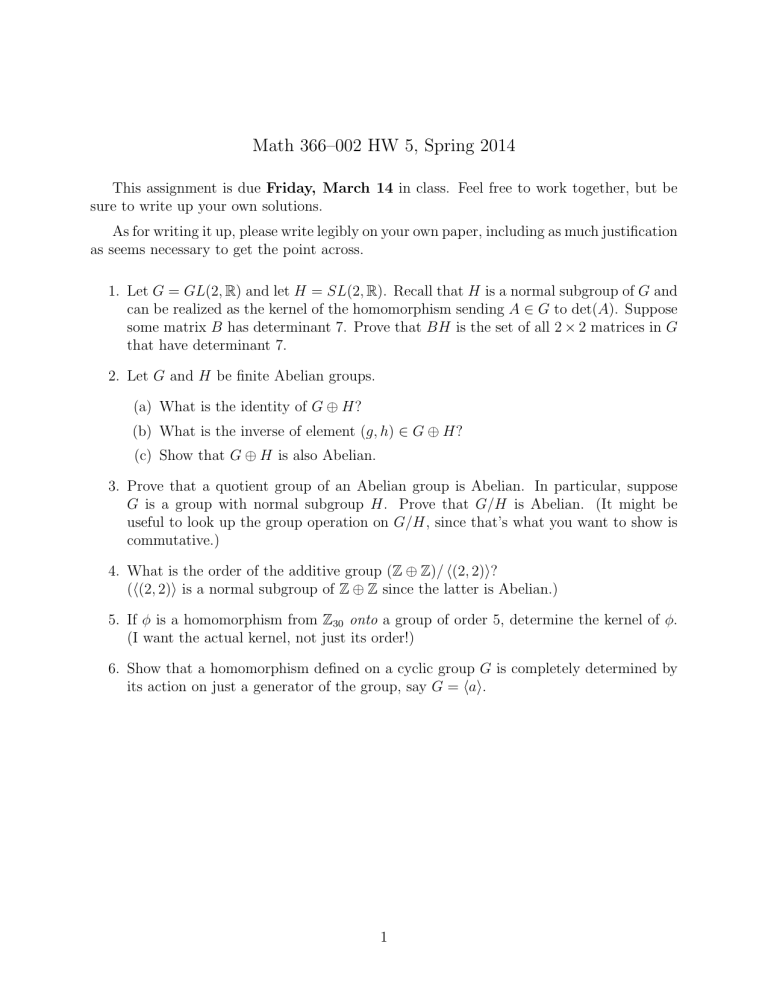
Math 366–002 HW 5, Spring 2014
This assignment is due Friday, March 14 in class. Feel free to work together, but be sure to write up your own solutions.
As for writing it up, please write legibly on your own paper, including as much justification as seems necessary to get the point across.
1. Let G = GL (2 ,
R
) and let H = SL (2 ,
R
). Recall that H is a normal subgroup of G and can be realized as the kernel of the homomorphism sending A ∈ G to det( A ). Suppose some matrix B has determinant 7. Prove that BH is the set of all 2 × 2 matrices in G that have determinant 7.
2. Let G and H be finite Abelian groups.
(a) What is the identity of G ⊕ H ?
(b) What is the inverse of element ( g, h ) ∈ G ⊕ H ?
(c) Show that G ⊕ H is also Abelian.
3. Prove that a quotient group of an Abelian group is Abelian. In particular, suppose
G is a group with normal subgroup H . Prove that G/H is Abelian. (It might be useful to look up the group operation on G/H , since that’s what you want to show is commutative.)
4. What is the order of the additive group (
Z
⊕
Z
) / h (2 , 2) i ?
( h (2 , 2) i is a normal subgroup of
Z
⊕
Z since the latter is Abelian.)
5. If φ is a homomorphism from
Z 30 onto a group of order 5, determine the kernel of φ .
(I want the actual kernel, not just its order!)
6. Show that a homomorphism defined on a cyclic group G is completely determined by its action on just a generator of the group, say G = h a i .
1


